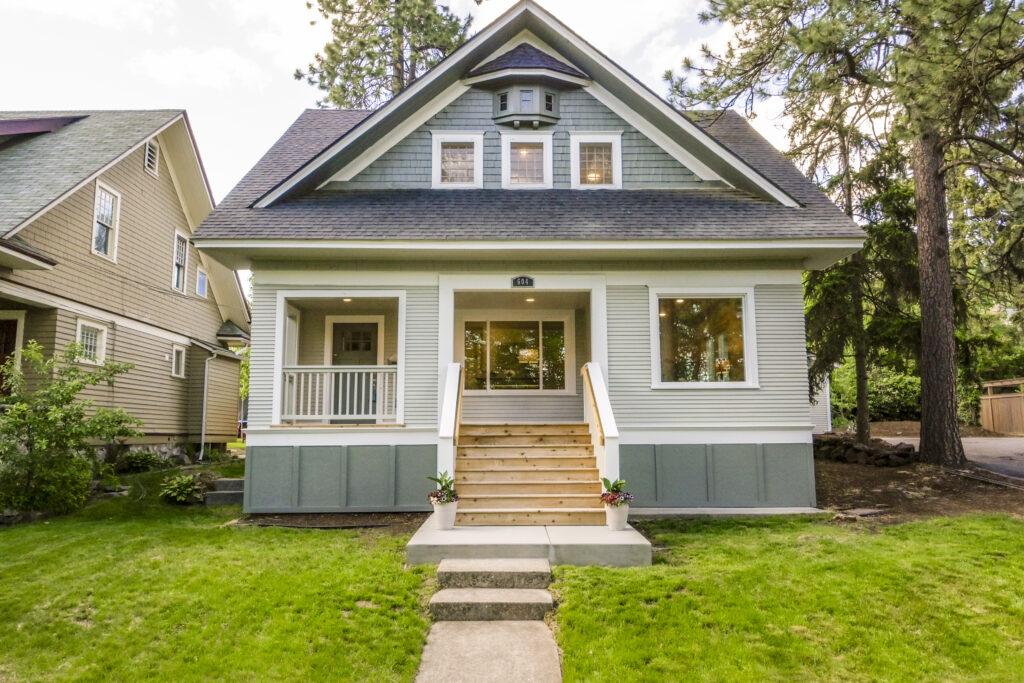Buying a house is a big event in anyone’s life. The next step is to protect your home from any possible disasters. Homeowners insurance can do that for you. Buying it can protect your finances and help put your worries at ease.
Homeowners insurance protects your house from a variety of different threats. You can expect it to cover the physical structure of your home and any personal property you have inside. You may also receive liability protection and coverage for any extra living costs you rack up if your residence is unlivable.
This article will explore what a basic homeowners policy covers. We’ll tell you about each type of coverage that these home insurance policies include, and how each works. We’ll also answer some frequently asked questions about what’s covered.
Standard Homeowners Policy Coverages
Four coverage types make up a standard homeowners policy. The most popular policy is H0-3 or “special form” home insurance, which includes protection for the following:
- Dwellings
- Personal belongings
- Liability
- Additional living expenses
The most common choice is to buy a policy, such as HO-3, that includes all four types. This is because it offers you the most protection from most disasters that life can throw at you. A standard home insurance policy will also protect you from any perils unless your insurer says differently. A peril is a disaster that could threaten your house at any point.
Dwelling Coverage
Dwelling coverage is the part of your homeowners policy that pays for repairs to structures on your property. It can pay to fix your home or replacement costs for the physical structure of your house or other buildings. Keep in mind that the damage needs to be from a peril that your policy covers.
These types of named perils include disasters such as:
- Fires
- Lightning strikes
- Hailstorms
- Hurricanes
These aren’t the only dangers that your insurer recognizes. But they are some of the most common. There are about 16 named perils that most homeowners insurance companies will cover. A standard HO-3 policy covers all of them.
Some Disasters Aren’t Covered
While homeowners protects your from many different perils, it won’t cover everything. For instance, most policies don’t include earthquake or flood insurance. You’ll have to buy that separately if you live in an area that’s at risk for these types of disasters.
Other Structures on Your Property
In general, a dwelling refers to your house. But it’s common for a policy to cover other structures on your property. Common structures include:
- Garages
- Gazebos
- Sheds
- Pool and guest houses
Personal Belongings Coverage
Your homeowners insurance may also cover any personal belongings that you own. This includes furniture, devices, cookware, and any other property you can think of. It’ll be up to you to know what property you have and how much it costs to replace in the event of any disaster. A good way to keep track of your items is by taking regular inventory of them. It’s smart to have a written checklist while you take inventory.
Personal belongings coverage isn’t just for the items in your house. It’ll protect your property no matter where it is in the world. For example, if someone breaks into your car and steals your phone, your homeowners policy would cover that. Keep in mind that you must pay your deductible when you file a claim.
Actual Cash Value (ACV) or Replacement Cost
Personal belongings coverage will either give you the replacement cost or actual cash value for your items. This depends on the type of policy that you choose. Replacement cost will give you an amount of money equal to the price you paid for the item. Actual cash value will give you the replacement cost minus any loss in value. Wear and tear or a decline in usability over time are what cause the depreciation of an object.
A policy with actual cash value is usually cheaper. But you might take a loss on your property. Replacement cost offers you the most financial protection.
Renters Also Need Coverage
If you’re renting a house or apartment, you’ll need to buy your own coverage. Your landlord’s homeowners insurance won’t protect your personal belongings. Buying an HO-4 or renters policy will make sure you have the proper protection for your belongings.
Liability Protection
Your home insurance may also protect you from liabilities that involve your house and property from any bodily injury or property damage. For example, if your friend falls down the stairs and hurts their leg, your insurer will cover the costs.
Liability covers damages that you or your family cause. Imagine that your kid hits a baseball into your neighbor’s window. No need to worry, your insurance will pay for it. This homeowners coverage will protect you from lawsuits and having to pay for the damages out of pocket.
Liability protection limits usually have a minimum of $100,000. But you may want to buy more. Generally, the more coverage, the better. This is especially true if you have a lot of money or valuable assets worth protecting.
Additional Living Expenses
Your homeowner’s policy can also pay for any living expenses you rack up when your residence is out of commission. Additional living expenses coverage only kicks in when damages are from a covered peril. It’ll pay for extra living costs, such as:
- Hotel bills
- Rentals
- Boarding for pets
- Restaurants and food
Just like the other types of coverage, you’ll have a limit to how much your insurance pays out for claims. It’ll be up to you to decide whether or not you should have more protection. Some policies may even limit the amount of time that your homeowners policy will pay your living costs. Be sure to check with your insurer about their time policies on additional living expenses.
Additional living expenses is separate from the other three homeowners coverage types. If you reach your limit, it won’t affect how much your home insurance covers. Though, you may still want to raise your limits to allow for extra protection.
How to Add Extra Protection
Sometimes, a standard policy may not be enough to cover the damages. Even after you’ve raised your limits, your homeowners coverage still might not get the job done. There are ways that you can add extra protection so that you can avoid paying for the damages on your own.
Umbrella Policies
One way to add extra coverage is by buying an umbrella policy. Umbrella policies afford you extra liability protection. An umbrella policy is especially useful if you’re trying to protect very expensive and valuable objects or structures. It also protects you if you’re liable for damages to other expensive property.
Endorsements or Policy Riders
Endorsements or policy riders are another way to get extra protection for your home. They cover you from damages that go beyond your current limits. This lessens the risk of a disaster costing you any of your own money. Riders may also help protect you from perils that your policy doesn’t already include.
If you feel you need more coverage, you should speak with your agent about adding endorsements to your policy.
Frequently Asked Questions
What isn’t covered by a homeowners policy?
Standard homeowners insurance policies don’t include some perils. Your policy likely won’t cover disasters like floods and earthquakes. This means you’ll have to decide whether you should go out and buy coverage for these perils.
Home insurance also doesn’t pay for damages that you cause. This includes a lack of maintenance on your house. You’ll have to pay for these damages. You also won’t get coverage for weathering of your property over time.
Are cars part of personal belongings coverage?
Your car wouldn’t be part of your personal belongings coverage. If a random disaster damages it, this will fall under your comprehensive auto insurance, which protects vehicles from random events like:
- Natural disasters i.e., severe weather, hurricanes, volcanoes, tsunamis, etc.
- Vandalism and theft
- Hitting an animal
Keep in mind that your comprehensive insurance doesn’t cover any of the property inside your car. Your personal belongings coverage would take care of that.
Does dwelling coverage include my tool shed?
Dwelling coverage extends to several types of structures on your property. This includes buildings like tool sheds, guest houses, and garages. It may also include fences. Check with your insurer about what they count as an acceptable structure in your policy.
Does homeowners cover my belongings if they’re in my car?
Your homeowners insurance protects your belongings, no matter their location. This means that if a disaster destroys any items in your car, your policy will pay to replace them. You should have an idea of what objects you own and how much they cost. To do this, make sure to keep an inventory checklist of your valuables. It’ll help you avoid any roadblocks when you’re trying to file a claim.


